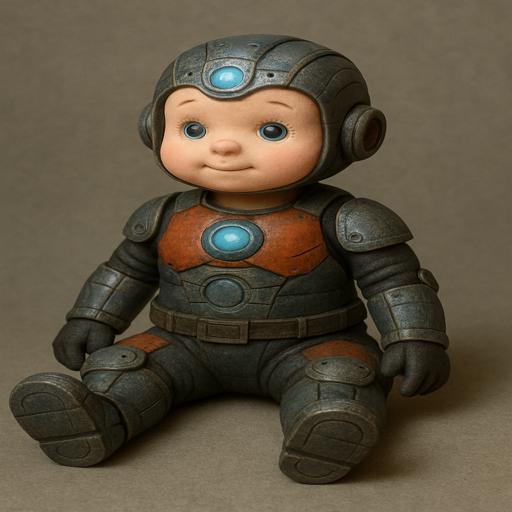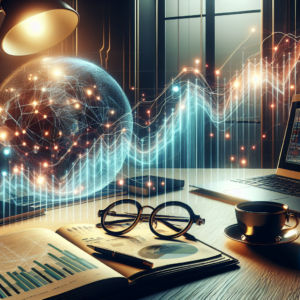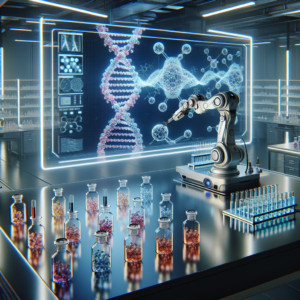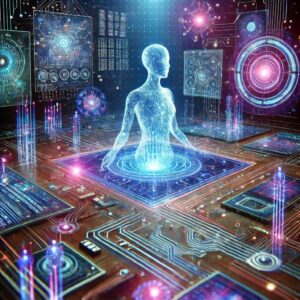‘Human Made’: Artists Push Back on A.I. Dolls and Action Figures
In recent years, the rise of artificial intelligence (A.I.) has transformed various industries, from healthcare to finance. However, its incursion into the world of art and toys brings forth a new kind of debate, one that grapples with the essence of creativity and human touch. The latest discourse, highlighted by artists across the globe, is in response to the increasing prevalence of A.I.-generated dolls and action figures. This burgeoning movement, dubbed ‘Human Made,’ emphasizes the intrinsic value of human creativity and the unique stories that can only be expressed through the artist’s personal lens.
The Impact of A.I. on Creative Industries
A.I. technologies have revolutionized the way products are designed and manufactured. While opening doors to innovative possibilities, they also prompt critical conversations about what it means to be an artist in the modern age. Here are some notable impacts of A.I. on creative industries:
1. Automation of Artistic Processes: A.I. can generate designs and art at an unprecedented pace, raising questions about the authenticity of such creations.
2. Access to Tools: A.I. equips more individuals with artistic tools, yet some argue that it diminishes the value of traditional craftsmanship.
3. Market Saturation: The influx of A.I.-generated products could lead to market saturation, making it difficult for human artists to compete.
4. Erosion of Originality: With A.I. capable of mimicking styles and themes, concerns arise regarding originality and ownership of creative works.
Artists’ Responses to A.I.-Generated Products
Amidst these developments, a cohort of artists has taken a stand against the commodification of creativity. Here are some of the ways artists are pushing back:
1. Emphasizing Human Connection: Artists stress the importance of human experiences, emotions, and narratives that A.I. fails to encapsulate.
2. Creating Unique Offerings: Many are focusing on craftsmanship and originality, producing one-of-a-kind dolls and action figures that resonate with personal stories.
3. Advocating for Ethical Practices: Artists are calling for ethical guidelines to address the use of A.I. in creative fields, ensuring that human artistry remains valued.
4. Utilizing A.I. as a Tool: Some artists leverage A.I. technologies to enhance their creativity rather than replace it, demonstrating the collaborative potential of human-A.I. interactions.
Understanding the ‘Human Made’ Movement
The ‘Human Made’ movement is not just a reactionary stance but also a celebration of human creativity. This movement serves as a reminder that while technology can assist us, it can never replace the nuanced understanding and emotional depth that human artists bring to their work.
Core Principles of the ‘Human Made’ Movement
The movement is built on several core principles that highlight the significance of human artistry:
1. Authenticity: Artists advocate for authenticity in their work, emphasizing that each piece tells a story that is distinctly human.
2. Cultural Heritage: The movement seeks to preserve cultural narratives and traditions that A.I. cannot replicate.
3. Emotional Depth: Human artists infuse their creations with emotions, allowing audiences to connect on a deeper level.
4. Craftsmanship: Attention to detail and the skill involved in traditional art forms are celebrated, reinforcing the value of handmade items.
The Future of Art in a Technological World
As A.I. continues to evolve, the future of art is uncertain but also ripe with potential. The ‘Human Made’ movement is paving the way for a new dialogue about the role of technology in creative expression. Here are some possibilities for the future:
1. Collaborative Projects: We may see more collaborations between artists and A.I., creating hybrid art forms that combine human creativity with technological prowess.
2. Art Education Evolution: Educational institutions may adapt their curricula to include training on collaborating with A.I. tools while emphasizing the importance of human creativity.
3. New Avenues for Expression: The advent of A.I. could lead to entirely new forms of artistic expression that merge traditional techniques with modern technology.
4. Community Engagement: Artists may leverage technology to engage communities in the creative process, fostering collective creativity and connection.
Conclusion: The Value of Human Artistry
While A.I. continues to revolutionize various sectors, the pushback from artists signals a crucial need for dialogue about the essence of creativity. The ‘Human Made’ movement serves as a reminder that despite technological advancements, the heart of artistry lies in human experiences, emotions, and craftsmanship. As we move forward, it is essential to strike a balance that embraces technological innovation while preserving the irreplaceable value of human artistry.
In a world increasingly influenced by A.I., the voice of the artist remains vital, ensuring that creativity stays rooted in the human experience. As consumers and creators, we must appreciate and advocate for the unique qualities that only human-made art can provide.



